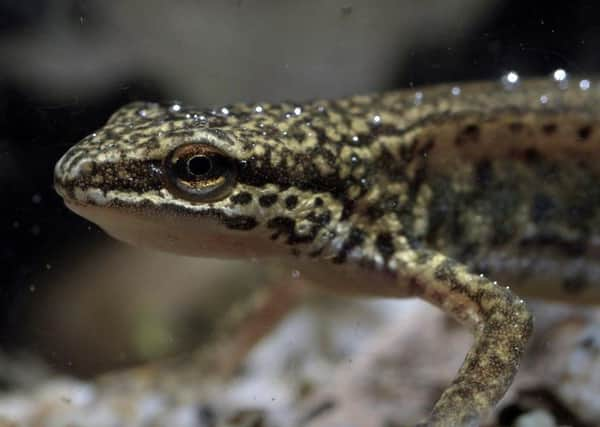COLUMN: Here there be dragons


Here be dragons is a phrase often used on modern versions of old medieval maps.
It is used at the map edge, to suggest the unknown lands beyond were believed to be full of mythical monsters.
Advertisement
Hide AdAdvertisement
Hide AdIn reality, there is only one example of the phrase ever being used on a medieval map. But the idea stuck.
Why am I talking about maps and dragons in this month’s wildlife column? Well, you may have dragons closer than you think. Complete with a Godzilla crest on their back. Just as well they are only a few centimetres long.
I am talking about newts.
Of British amphibians, newts are the ones you are least likely to see. Unlike frogs and especially toads which use noisy croaks to attract mates, newts do elaborate underwater dances. You could have newts in your garden pond or a field drain, and never know it.
There are three kinds of newt that live in the UK, all looking like soft-skinned lizards.
Advertisement
Hide AdAdvertisement
Hide AdCommonest is the smooth newt - 10cm long, and brown. Their tummies are yellow with black spots. In the spring males grow a short wavy crest on their back.
Palmate newts look very similar to smooth newts, but their males lack the crest.
Instead they have black webbing between the toes on their hind feet. They also have less spots underneath.
Great crested newts are the big boys, growing up to 17 cm long. They are very dark on top, bright orange with dark blotches underneath. In the spring males grow a large wavy crest on their back.
Advertisement
Hide AdAdvertisement
Hide AdThese are the rarest newts in the UK, and specially protected by the law.
Unlike frogs, newts do not lay a large mass of eggs. Instead each egg is laid separately, carefully wrapped in the leaf of a water plant. The eggs hatch into tadpoles, much like frogs and toads. But as they get older you can see another difference. Newts grow their front legs first; frogs and toads grow their back legs.
Once the young newt has fully grown it leaves the water and lives alongside the adults in damp shady areas.
This could be your best time to spot a newt. They have been spending the winter hibernating in warm places like compost heaps, but will now be waking up and heading towards their breeding ponds. So, keep an eye open in your garden, or on the paths here at Frampton Marsh, for the tiny dragon going for a walk!